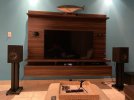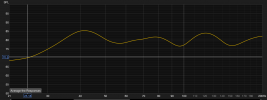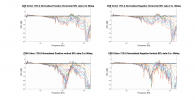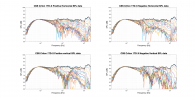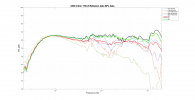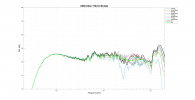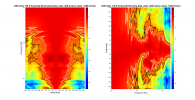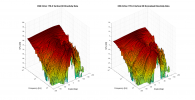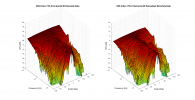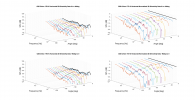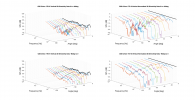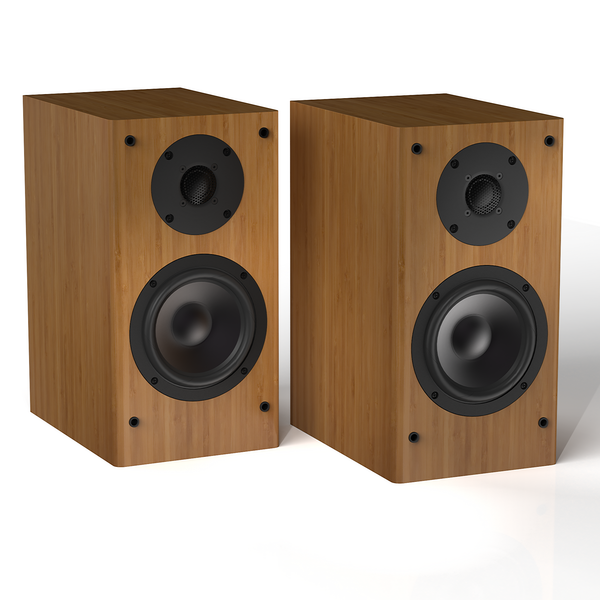This is a review and detailed measurements of the CSS Criton 1TD-X Kit speaker. I requested a sample from the company and shipped a pair to me already built in nice veneer:
View attachment 263965
I believe the kit costs US $770 including an MDF flatpack. Typical of DIY kits, you get the value add of very heavy construction likely due to (3/4?) thick MDF panels. I would say it is nearly twice as dense/heavy as any speaker costing near its its KIT price. Not much to see on the back side:
View attachment 263966
Company was a delight to work with, being highly responsive and quite patient as I got to test these speakers.
Measurements you are about to see are performed by Klippel Near-field scanner. Frequency response measurements are "anechoic." Reference axis is the tweeter center.
CSS Criton 1TD-X Measurements
Here is our usual "spinorama" CEA-2034 frequency response graphs:
View attachment 263967
The on-axis as noted is generally flat and good, sans a few dB here or there. What stands out is the directivity error around crossover point where the woofer has gotten directional but the tweeter is not. This is due to lack of large waveguide around the tweeter to match the directivities of the two drivers.
Sensitivity is less than specifications and I had to push the speaker by 4 to 5 dB to get my usual reference measurement level. Be sure to have good bit of amplification power to drive these speakers.
Near-field response shows a resonance from the port/cabinet and and another from the woofer outside of its range:
View attachment 263969
Early window reflections have a bit of deviation due to the directivity error:
View attachment 263971
But interestingly enough sum up well with on-axis to produce a good predicted in-room frequency response:
View attachment 263972
As predicted from the spin, there is directivity error:
View attachment 263973
View attachment 263974
The wider response can be a benefit or not, depending on your room situation. Vertical response is typical for a 2-way speaker so stay at tweeter axis relative to your ear height:
View attachment 263975
Distortion performance was very good at 86 dBSPL and 96 dBSPL with latter above low bass:
View attachment 263976
View attachment 263977
Impedance is above average which makes it an easier load for an amplifier (requires less current):
View attachment 263981
Finally here are CSD/Waterfall and step responses:
View attachment 263978
View attachment 263979
CSS Criton 1TD-X Kit Listening Tests and Equalization
Note: my allergies are acting up and my ears are rather plugged up!
First impression was fairly positive with my female vocal tracks. After a bit though, I found the sound a bit bright so applied different EQ filters and landed on these:
View attachment 263982
Fully correcting to on-axis response in upper bass/mid-range was challenging as it improved things on some tracks, but made others boomy. So I had to back off as you see. Bass response was very good but if you cranked it up too much, it would gradually get distorted. I played with a high pass filter but at the end, I didn't like it. Proper correction in bass region requires room measurement to make sure one knows the interaction with the room modes. Other that, the sound was excellent especially on vocals, instrumental and techno music.
I was impressed by the dynamics of the speaker. That woofer has fair amount of excursion compared to what we typically see in speakers in this size. Yes, as noted, it tries to play too low of a frequency and can get distorted. Other than that though, this speaker can play loud, really loud! Despite only using one speaker, I was able to fill a very large space with very enjoyable sound.
Note that I was driving the speaker with 400+ watts of power so as noted, you need to give it fair amount of juice (if you want to listen loud).
Conclusions
The CSS Criton 1TD-X design has benefited from some good design choices such as a woofer with impressive power delivery with good on-axis and predicted-in-room frequency response. There are minor imperfections here and there but at higher level, it achieves very good fidelity. Subjective experience with a bit of filtering was very good. As a kit, it will give you the satisfaction of building something you can take pride in.
Let me also repeat the willingness of the company to have its speaker subjected to our rigorous testing where others run away fast. Or don't even respond. These things score big points in my book.
I am going to put the CSS Criton 1TD-X Kit speaker to my recommended list.
----------
As always, questions, comments, recommendations, etc. are welcome.
Any
donations are much appreciated using
: https://www.audiosciencereview.com/forum/index.php?threads/how-to-support-audio-science-review.8150/

